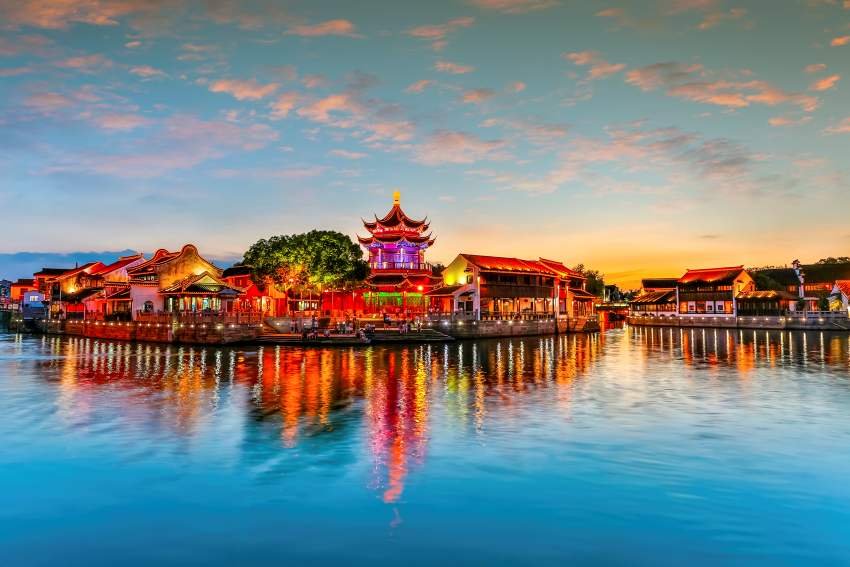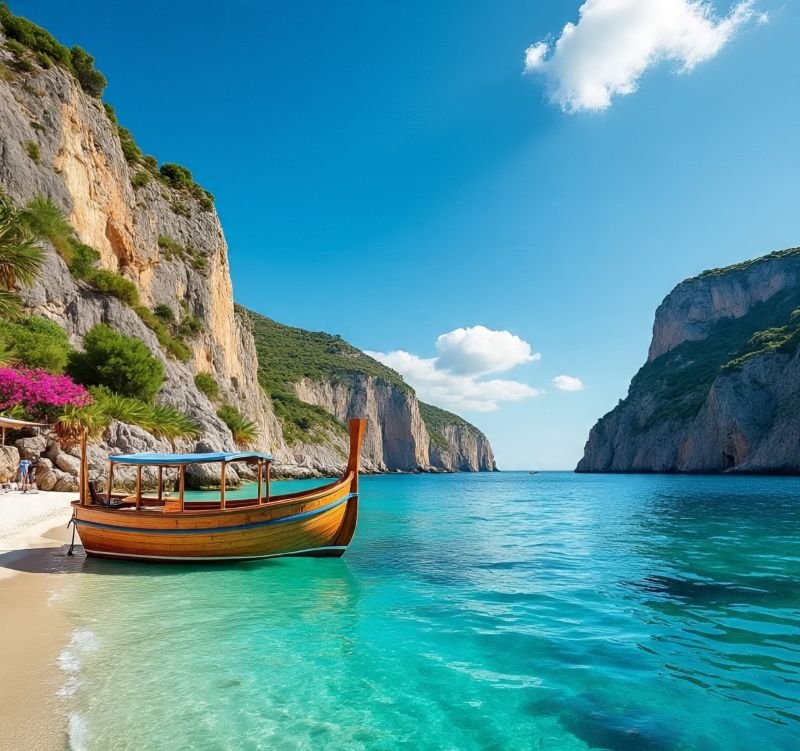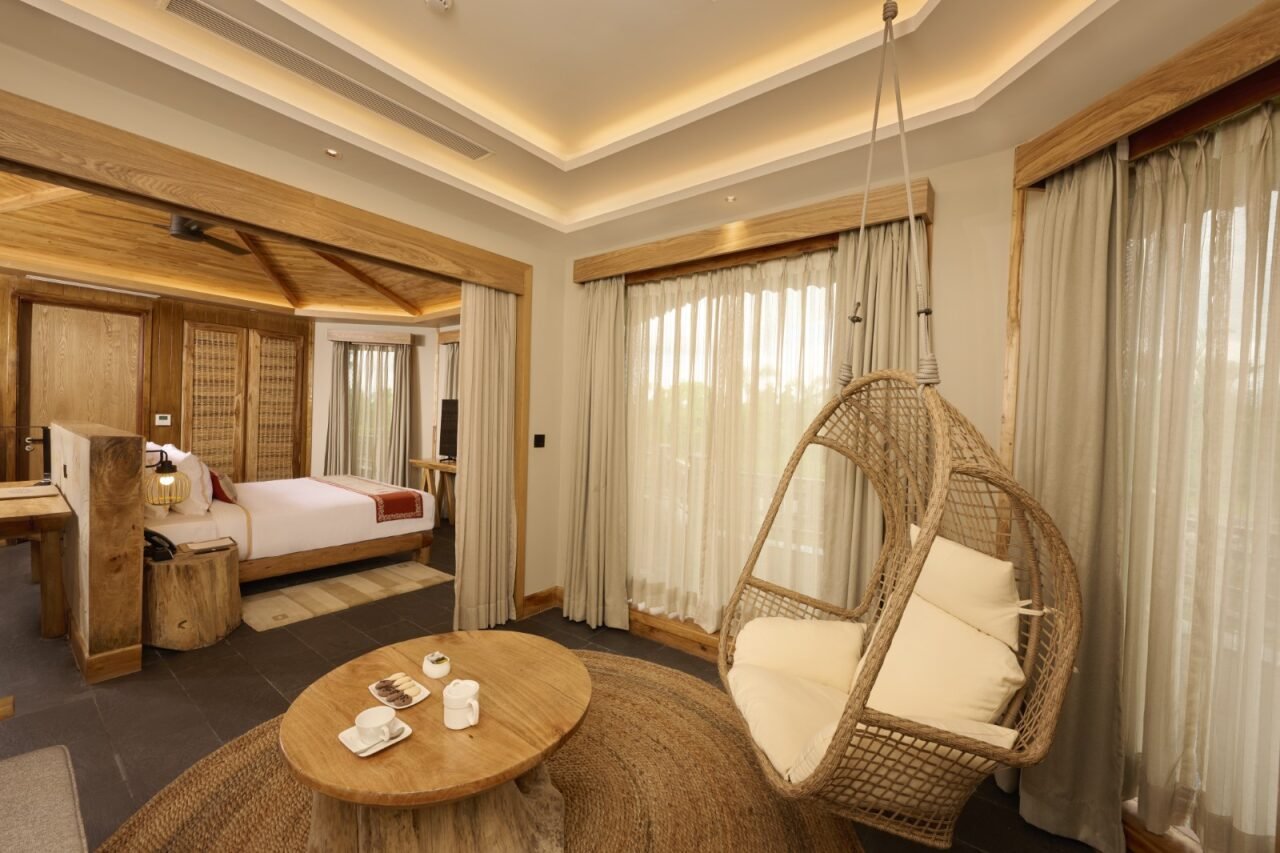Travel Trends
China’s Rising Appeal Sparks Travel Boom Among Indonesians: A Look at the Changing Trends

Saturday, August 2, 2025
In recent years, China has become an increasingly attractive destination for Indonesian travelers. This surge in interest is driven by several factors, including improved air connectivity, new and diverse travel offerings, and an evolving tourism landscape that goes beyond the traditional hotspots of Beijing and Shanghai. The shift in travel preferences is a notable trend that is reshaping the tourism industry in both countries, with Indonesia’s outbound tourism to China experiencing a significant boom.
According to TX Travel, bookings to China doubled in 2024 compared to the previous year, with a further 30% increase expected by mid-2025. The diversity of experiences on offer, from affordable group tours to luxury packages, has led to the rapid rise in Chinese tourism popularity among Indonesians. The country’s rich mix of history, culture, and scenic beauty is captivating travelers who are eager to explore beyond the usual routes and into lesser-known but equally fascinating regions of China.
This rise in tourism to China is more than just a passing trend; it marks the beginning of a transformative shift in how Indonesians perceive travel to the region. The increased interest not only benefits the travel agencies but also has far-reaching implications for both the Indonesian and Chinese tourism industries.
China’s Appeal Beyond Beijing and Shanghai
For decades, Beijing and Shanghai have been the go-to destinations for Indonesian travelers visiting China. These cities, known for their modernity, historical landmarks, and cultural significance, have long captured the imaginations of tourists. However, there has been a noticeable shift in recent years, with increasing numbers of travelers seeking destinations beyond these two major cities.
Secondary cities such as Chengdu, Xi’an, Hangzhou, and Harbin are gaining popularity. This trend has been fueled by the growing desire for new experiences, coupled with an increasing awareness of the diverse offerings China has beyond its main urban centers. Harbin, in particular, has become a winter favorite due to its famous Ice Festival and picturesque snowy landscapes, offering a unique appeal to travelers looking for seasonal adventures.
The city of Harbin, located in northeastern China, is quickly becoming a key destination for Indonesian tourists seeking to experience winter in a way that is vastly different from what their tropical homeland offers. With the city’s Ice Festival, which features elaborate ice sculptures and a magical winter atmosphere, Harbin is proving that China’s lesser-known destinations are capable of attracting large numbers of visitors.
Indonesian travelers are also becoming more adventurous in their choices, exploring cities like Chengdu, known for its spicy cuisine and cultural heritage, and Xi’an, home to the famous Terracotta Army. These secondary cities offer a blend of history, culture, and natural beauty, giving Indonesian tourists a broader view of China beyond its major metropolitan areas.
Tourism Agencies Adapt to Changing Demands
The rapid shift in Indonesian travel patterns has not gone unnoticed by local travel agencies. TX Travel and Dwidaya Tour, two major players in the Indonesian travel industry, have observed a marked increase in bookings to China. Anton Thedy, CEO of TX Travel, shared that bookings for both affordable group tours and high-end packages, some priced above $1,900 per person, are selling out quickly. He emphasized that the diversity of experiences available in China—from natural wonders to rich cultural offerings—has made it an attractive option for a wide variety of Indonesian travelers.
Similarly, Yohannes Heraldo, vice president of marketing communications at Dwidaya Tour, highlighted how China has quickly overtaken other destinations to become the company’s top outbound product. Despite being one of the last countries to reopen after the pandemic, China has surged in popularity, with travelers increasingly opting for alternative routes and experiences that go beyond the traditional tourist spots.
One of the key factors contributing to the boom is the affordability of travel to China. Many Indonesians are drawn to China because of the availability of reasonably priced packages. At the same time, luxury offerings such as premium tours and winter excursions to northern cities like Mohe are also gaining traction among more affluent travelers. This balance between affordability and premium experiences ensures that Chinese tourism can cater to various segments of the Indonesian market.
The Role of Air Connectivity in Expanding Travel Options
Another crucial factor driving the boom in Indonesian travel to China is improved air connectivity. Several airlines, including Batik Air and China Southern, have expanded direct routes between Indonesian cities and various destinations in China. This expanded network has made it easier for travel agencies to create multi-city packages that offer Indonesian tourists the opportunity to explore more of China in one trip.
Direct flights have significantly reduced travel time and cost, making it more convenient for Indonesian travelers to visit cities in China that were once difficult to access. These developments have also encouraged the creation of shorter, more flexible itineraries, which is particularly appealing to those with limited time or who want to explore several destinations in one visit.
In addition to direct flights, travel agencies are increasingly offering customized packages that cater to specific interests, whether it’s cultural exploration, culinary experiences, or nature-based activities. These packages allow Indonesian travelers to design their trips based on their unique preferences, contributing to a more personalized and enriching travel experience.
China’s Transformation: A More Welcoming Destination
As the number of Indonesian tourists increases, China has also undergone a transformation in terms of its tourism offerings. The country has heavily invested in infrastructure improvements, including the development of modern resorts, new theme parks, and well-maintained museums. These advancements have made China a more welcoming destination for families, young travelers, and those seeking both adventure and relaxation.
The rise of modern resorts in cities like Hangzhou and Chengdu, alongside the ongoing development of theme parks and other family-friendly attractions, has made China more appealing to a broad demographic. Chinese tourism is no longer solely about exploring ancient history or iconic landmarks. Instead, it has diversified to include more contemporary experiences, such as high-tech amusement parks and luxury resorts that cater to international tourists.
Pauline Suharno, chairman of the Indonesian Travel Agents Association, noted that these changes are contributing to the country’s growing appeal. She highlighted that China’s evolving tourism experience has leveled up, offering a wide range of attractions.
Conclusion: China’s Rising Appeal Fuels Indonesian Tourism Growth
China’s tourism landscape is undergoing a remarkable transformation, and the rise in Indonesian travelers heading to the country reflects this shift. With improved air connectivity, new and diverse offerings, and a growing interest in destinations beyond the well-trodden paths of Beijing and Shanghai, China is quickly becoming a top destination for Indonesian tourists. The popularity of cities like Harbin, Chengdu, Xi’an, and Hangzhou is helping redefine China as a multifaceted destination that appeals to a wide range of travelers, from those seeking winter festivals like the Ice Festival to those drawn to the country’s rich heritage and evolving infrastructure.
As tourism demand continues to grow, China’s ability to offer a blend of affordable group tours and high-end experiences ensures that it remains an attractive destination for Indonesian travelers. The diverse landscapes, cultural landmarks, modern amenities, and immersive experiences available across the country make it clear that China is no longer just a destination for a week-long visit but rather a place that offers something new at every turn, drawing people back for repeat visits.
For Indonesia’s travel industry, this surge in demand has created opportunities for growth, with travel agencies seeing China move to the top of their outbound product lists. As more Indonesians share their experiences online, the word is spreading, fueling further interest in this dynamic destination. Looking ahead, the Indonesian tourism market’s growing affinity for China signals not only the country’s increasing global appeal but also the broadening horizons for travelers seeking enriching experiences far beyond the usual holiday spots.
In this evolving landscape, the synergy between improved infrastructure, innovative tourism offerings, and Indonesia’s diverse traveler preferences positions China to remain a major player in the tourism industry for years to come. The connection between these two countries is set to deepen, and as more Indonesians explore China’s vast offerings, both nations will continue to benefit from an expanding cultural exchange and thriving tourism economy.
Travel Trends
Othonoi, a serene Greek island just twelve miles from Corfu, is quietly rising amid booming travel trends as a peaceful alternative to mass tourism. Could this be your next escape?

Sunday, August 3, 2025
Othonoi
It was conveyed that Othonoi, a little-known island located 12 miles northwest of Corfu, where the Ionian and Adriatic Seas meet, was gradually gaining recognition as a peaceful alternative to overcrowded travel destinations. Although it covers just 3.9 square miles, it was suggested that the island’s serene ambiance and natural beauty made it stand out sharply against Corfu, which reportedly now hosts over two million tourists annually. Observers indicated that this contrast was drawing interest from travelers weary of mass tourism.
The Crowd‑Driven Shift Toward Othonoi
It was explained that tourism to Corfu had grown substantially since 2019, with international flight arrivals increasing by 32% and ferry passenger numbers rising by 31%. Such figures were interpreted not merely as proof of popularity, but also as evidence of infrastructural strain and visitor overwhelm. In direct response, travelers were described as turning toward Othonoi for its tranquil pace—reachable via a short ferry ride, the island maintained a sense of seclusion and calm that Corfu could no longer guarantee.
Mythical Resonance and Cultural Depth
The narrative reportedly emphasized that Othonoi possessed deep-rooted connections to classical mythology. It was widely regarded as the island of Ogygia, where the nymph Calypso held Odysseus captive for seven years, according to Homer’s Odyssey. It was observed that the Cave of Calypso, situated near Aspri Ammos Beach, still exists and continues to intrigue visitors with its legendary resonance. The continuing presence of cypress trees—noted by Homer for their scent—was said to evoke an ancient sensory experience, merging past and present in a unique way.
Local Character and Seasonal Dynamics
Sources indicated that despite its compact size, Othonoi was divided into two principal regions—Ano Panta and Kato Panta—with more than 20 small settlements distributed across the terrain. It was reported that Ammos, the island’s port, served as the central hub, offering modest lodging, dining, vehicle rental options, and cultural stop‑offs. Other villages mentioned, including Chorio (the capital), Dafni, and Damaskatika, were said to offer deeper insight into island life. The summer population reportedly peaked at slightly under 400 residents, while winter saw a dramatic decline—an ebb that was said to contribute significantly to the island’s reflective tranquility. Reportedly, arrival options included a ferry from Corfu, taking around three hours, or a shorter service from Agios Stefanos, lasting approximately one hour.
Secluded Beaches and Panoramic Heights
It was noted that Othonoi was home to a range of untouched coastal spots, many accessible only by boat. Among the beaches named were Molos, Kamini, Kanoula, Kontoskes, and notably Aspri Ammos, celebrated for its white sands and turquoise waters. The Cave of Calypso, again highlighted, was reported as a key convergence of myth and environment. For those inclined toward elevation and view, ascend Mount Imerovigli, the island’s highest point at 1,296 feet, which was said to provide sweeping views over both the Ionian and Adriatic Seas, as well as nearby Diapontian Islands. The climb was described as offering not just beautiful vistas, but also a potent sense of solitude and reflection.
Emerging Traveler Preferences
It was suggested that as popular destinations became more saturated, global travelers—particularly from Europe and the UK—were reorienting their priorities. Their preferences were said to include:
- Lower visitor density, enabling more personal and immersive experiences
- Cultural or historical significance, offering meaning beyond sun and sand
- Reduced environmental impact, aligning with eco-conscious values
- Authenticity over commercial spectacle
Such preferences were interpreted as part of a broader shift toward micro‑tourism, wherein travel experiences are rooted in small-scale, sustainable, and locally grounded engagement rather than mass-market packages.
Broader Industry Implications
Commentators conveyed that the quiet rise of Othonoi might be emblematic of a larger transformation in how travel is approached and marketed. It was posited that as interest in less commodified, more meaningful destinations grows, other small islands and overlooked areas worldwide may come into focus. It was proposed that nations might begin to highlight such hidden gems, promoting a more balanced tourism model that prioritizes heritage preservation, cultural respect, and slower forms of enjoyment over high-density visitor numbers.
The Symbolic Value of Thoughtful Travel
Finally, it was remarked that Othonoi could serve as a powerful symbol of what modern travel could—and perhaps should—be again. In a time when many peaceful places are being overtaken by mass tourism, Othonoi’s quiet beauty, mythological resonance, and low-impact charm were seen as representing a return to simpler, more meaningful travel. Observers asserted that as attention to such destinations quietly increased, they might inspire a new approach to global tourism—one valuing quality, cultural integrity, and community-led experiences—offering a template for a future of travel that is thoughtful, respectful, and deeply rewarding.
Travel Trends
Top 35 Travel Trends in August

At the forefront of digital innovation, Mindtrip debuts a new AI-powered mobile app, offering real-time, hyper-personalized travel guidance that adapts to users on the go. United Airlines also upgraded its app with a connecting flight-centric feature, simplifying complicated itineraries for smoother travel. Meanwhile, the luxury sector is expanding with a renewed focus on wellbeing. Marriott International’s Luxury Group launched its ‘Luxury Wellbeing Series 2025’ across top Asian destinations, while Loreto’s Mailena, debuting in late summer 2026, introduces a restorative adults-only retreat to Mexico’s Baja Peninsula.
Nostalgia is trending, too as ‘Pan Am Journeys’ by Private Air, under license from the iconic Pan American World Airways, offers retro-inspired, private air travel experiences. Similarly, Carl Friedrik’s ‘Carry-on X Core Collection’ nods to mid-century aviation aesthetics with sleek, functional design. On the water, Viking makes waves by entering the Indian river cruise market with the introduction of the ‘Viking Brahmaputra,’ bringing high-end cruising to the subcontinent. Nox, looking to the future of European rail travel, announces plans for 2027 overnight trains with private, comfort-first cabins—reshaping the night train experience.
On the lifestyle side, Four Seasons adds flair with its ‘Resort Pajamas Collection,’ while Groupe GM and Hei Poa debut a soothing, protective sun care hotel amenity line. Additionally, ‘The Cayman Club’ by Cayman Jack provides travelers with a sense of calm amid travel disruptions, and ‘Camp Unwritten’ by World of Hyatt and Reese’s Book Club invites guests to glamp with books, nature, and luxury.
Altogether, August’s travel trends reflect a traveler mindset increasingly shaped by individuality, relaxation, and meaningful escape—one that seeks not just destinations, but immersive, personal journeys.
Travel Trends
Nepal’s Royal Tulip opens Doors

In a major push to elevate Nepal’s hospitality landscape, Sarovar Hotels—part of the Louvre Hotels Group—has launched Royal Tulip Chitwan, the brand’s premium entry into the country. Situated at the edge of Chitwan National Park, a UNESCO World Heritage Site, the new resort seamlessly blends luxury, nature, and Nepali culture. The opening marks the debut of the Royal Tulip brand in Nepal and signals growing confidence in the country’s tourism potential.
Developed by KTM Hospitality (a KTM Group Holdings company), the resort spans over 4 acres and offers 65 upscale rooms and villas. Accommodation options include private Pool Villas, serene Water Villas, and unique Machan-style stays that elevate the guest experience. With a focus on nature-inspired design and top-tier comfort, the resort is positioned as an ideal destination for luxury travellers, wildlife enthusiasts, and honeymooners alike.
Royal Tulip Chitwan goes beyond just accommodation, offering world-class facilities like a luxury spa, fitness centre, swimming pool, and multiple gourmet dining options. Guests can enjoy meals at Majhighar, Forest Flame, the revolving deck Machan, or unwind at the stylish Tanavi Sports Bar. The emphasis is on immersive experiences rooted in local culture and cuisine, combined with global service standards.
Ajay K. Bakaya, Chairman of Sarovar Hotels, emphasised the strategic significance of this launch, noting Nepal’s increasing appeal among Indian and international tourists. He stated that Royal Tulip Chitwan is designed to offer a luxurious yet culturally authentic retreat. Rameshwar Shah of KTM Hospitality echoed this sentiment, highlighting the resort’s role in promoting Chitwan as a luxury eco-tourism hotspot.
With this debut, Louvre Hotels Group is expanding its South Asian footprint by targeting high-potential, experience-driven markets. Royal Tulip Chitwan is expected to become a landmark for leisure travel in Nepal, attracting guests seeking a tranquil yet luxurious escape surrounded by nature and culture.
-

 Brand Stories2 weeks ago
Brand Stories2 weeks agoBloom Hotels: A Modern Vision of Hospitality Redefining Travel
-

 Brand Stories1 week ago
Brand Stories1 week agoCheQin.ai sets a new standard for hotel booking with its AI capabilities: empowering travellers to bargain, choose the best, and book with clarity.
-

 Destinations & Things To Do2 weeks ago
Destinations & Things To Do2 weeks agoUntouched Destinations: Stunning Hidden Gems You Must Visit
-

 Destinations & Things To Do1 week ago
Destinations & Things To Do1 week agoThis Hidden Beach in India Glows at Night-But Only in One Secret Season
-

 AI in Travel2 weeks ago
AI in Travel2 weeks agoAI Travel Revolution: Must-Have Guide to the Best Experience
-

 Brand Stories4 weeks ago
Brand Stories4 weeks agoVoice AI Startup ElevenLabs Plans to Add Hubs Around the World
-

 Brand Stories3 weeks ago
Brand Stories3 weeks agoHow Elon Musk’s rogue Grok chatbot became a cautionary AI tale
-

 Asia Travel Pulse4 weeks ago
Asia Travel Pulse4 weeks agoLooking For Adventure In Asia? Here Are 7 Epic Destinations You Need To Experience At Least Once – Zee News
-

 AI in Travel4 weeks ago
AI in Travel4 weeks ago‘Will AI take my job?’ A trip to a Beijing fortune-telling bar to see what lies ahead | China
-

 Brand Stories4 weeks ago
Brand Stories4 weeks agoChatGPT — the last of the great romantics















You must be logged in to post a comment Login